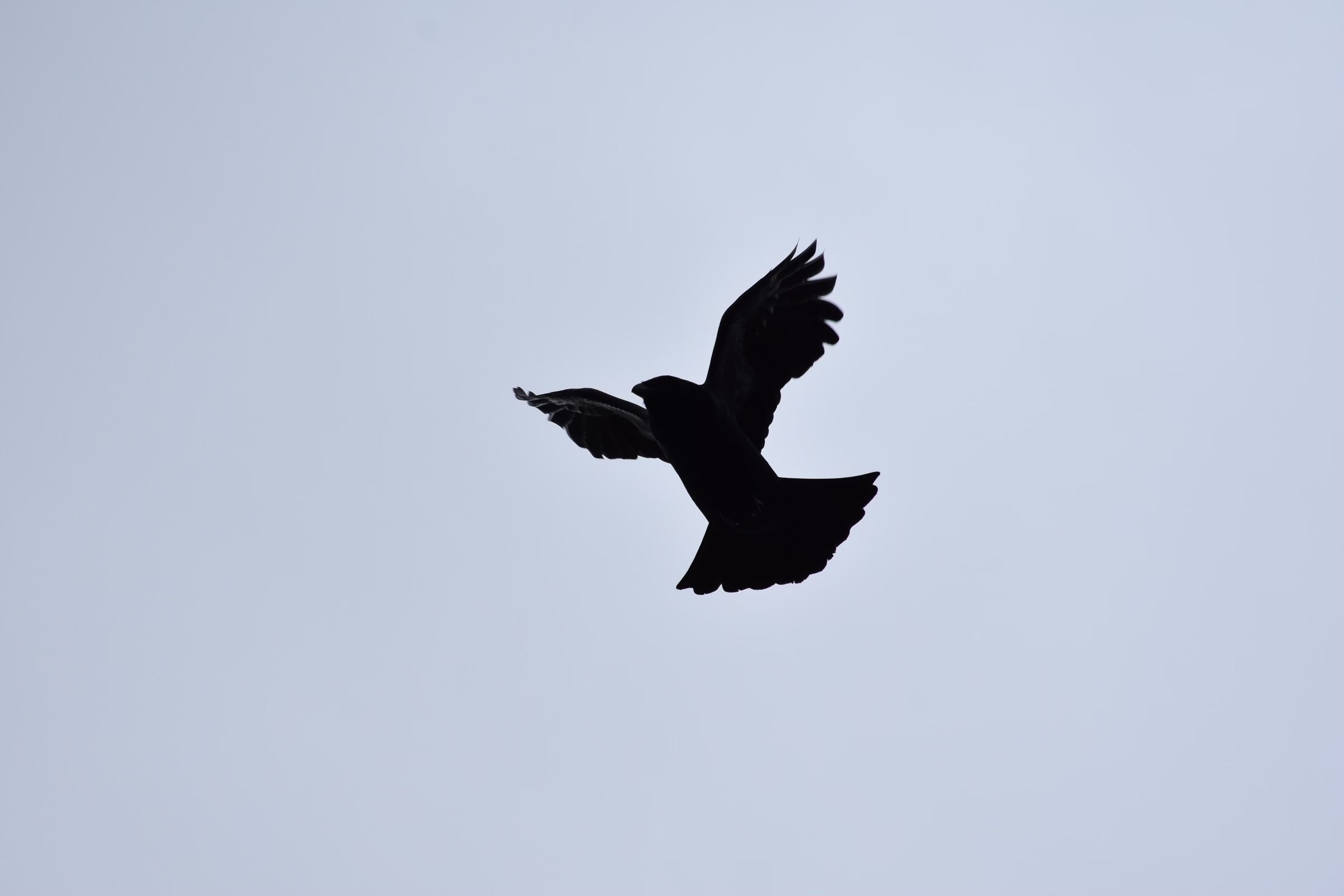The Ravens' Dance
For a long time I’ve considered the month of February to be the real beginning of spring. The days get noticeably longer.
The birds know it. The trees know it. I know it. It triggers a response that makes our spirits rejoice.
Common Ravens (Corvus corax) feel it. They begin their annual courtship rituals of "dancing in the sky" by mid-February: barrel rolling, diving downward, upward thrusts, and mid-air talon locks, all in an effort to woo a mate. It is a marvel to watch! The physics alone, bundled into a large feathery organism, boggles the mind!
Common Ravens are just that – common – here in Alaska. They are found everywhere; city parking lots, the numerous open spaces and neighborhood parks in town, the hills and the highest peaks of the Chugach Mountain Range. In winter they spend a lot of their time in the city. Come spring, when the many gull species begin to return, they head for the hills.
Back home, the American Crow (Corvus brachyrhynchos) displays some of the same flight behavior. Somehow, though, the raven’s show is much more thrilling.
This is at least in part due to a few physiological differences between the two:
Crows are about 17-18”. Ravens are larger, about 50% larger;
Crows’ wingspan average about 35-39” in length, with blunter wing tips. Ravens’ wingspan is about 46-47”, with a tapered, longer wing shape;
Flight feathers (remiges) are different. While both species have the same number of primary feathers, that being ten, the outermost four on the raven are more deeply slotted (separated), allowing more air to flow between each of the them. This helps tremendously in navigating through turbulent air and with trickery flight skills;
Longer tail feathers (retrices) also help with aerial maneuverability. In these last two ways, ravens are very similar to hawks.
I am not entirely sure yet, but there’s gotta be something ingenious going on internally that allows Raven to stay aloft and not pass out from all the speedy twists and turns and flips they can do. I am still researching this and I’ve posed that question to an ornithologist friend.
You are probably already aware of the level of intelligence the Corvid family possesses. Did you know ravens mate for life? Did you know they can live in the wild for 40-50 years? Did you know they belong to the songbird group? Their vocal repertoire is as impressive as their acrobats.
Back to the Ravens’ Dance. While much of their fancy flying is a response to breeding season, you can observe a “conspiracy” of ravens (a term that hearkens back to the negative connection we humans have imposed on corvids) rising and falling with the wind, soaring over ridges, often beginning with one raven then another one or two join in, building up to as many as a few dozen or more playing together in air currents this way, the group as a whole rising to about 1000 feet. Key word there being “playing”.
One of my favorite videos about this can be found here. BBC Earth Unplugged, does a great job comparing the flight skills of a hunter, the Peregrine Falcon, with an acrobat, the Common Raven. You have to check out the slo-mo recording of the raven flipping itself over mid-flight!
The following video, by Haynes Brooke, is a must watch at full screen. It shows ravens displaying the full repertoire of their aerial acrobats in a superbly beautiful presentation.
I so wish I could tumble through the air like a raven. What that must feel like!
In a word… freedom.
Many thanks to Rob Garneau for contributing his ravens in flight photos!





